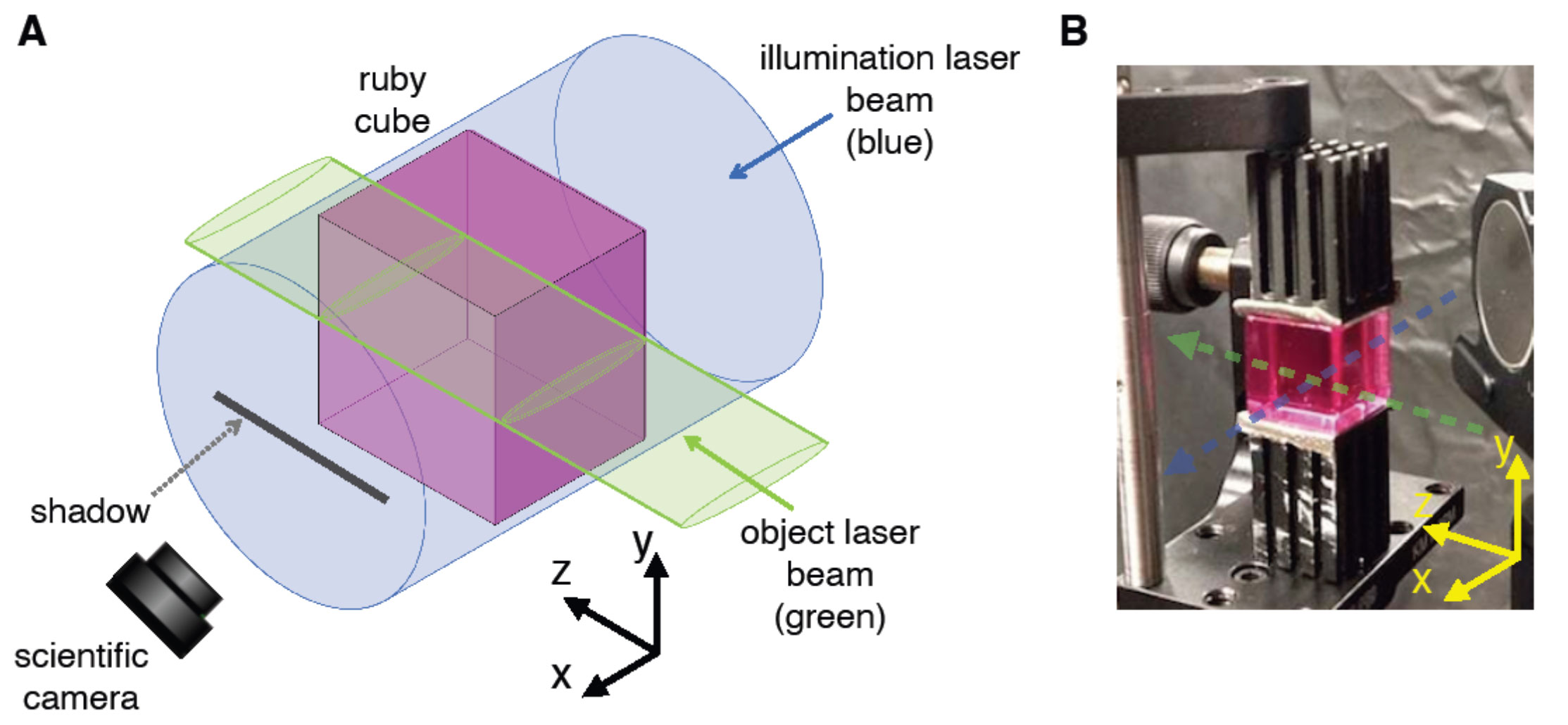![]()
Researchers showed that a laser beam can sometimes act like a solid object and cast a shadow that is visible to the naked eye. In the picture, the shadow appears as the horizontal line traversing the blue background. [Image: R. A. Abrahao, H. P. N. Morin, J. T. R. Pagé, A. Safari, R. W. Boyd, J. S. Lundeen]
Over lunch one day, physicists at the University of Ottawa, Canada, discussed the observation that experimental schematics made with 3D visualization software sometimes depict laser beams as having a shadow. The software does so because it fails to consider that light itself cannot cast a shadow―or can it?
Unlike ordinary physical objects that have mass, photons pass through each other unimpeded in ordinary circumstances. But scientists have now discovered that a laser beam, in certain conditions, can act like an opaque object and cast a shadow (Optica, doi: 10.1364/OPTICA.534596). The results have potential applications in fabrication and imaging, or for devices that can control the transmission of a laser beam with another laser beam.
Reconsidering the shadow
Like a typical shadow, the shadow created by lead author Raphael A. Abrahao and coworkers is due to an object―in this case, a laser beam―blocking illuminating light. Their shadow also takes the shape of the illuminated object, follows as the object changes position or shape, and adheres to the contour of the object it falls on.
“Laser light casting a shadow was previously thought impossible, since light usually passes through other light without interacting,” said Abrahao, who is now at Brookhaven National Laboratory, USA, previously at the University of Ottawa, in a press release accompanying the research. “Our demonstration of a very counterintuitive optical effect invites us to reconsider our notion of shadow.”
The shadow comes about through a nonlinear optical process that occurs when light interacts with a material in an intensity-dependent way and can influence another optical field. While most materials exhibit saturation of absorption at high laser intensities, meaning that they become more transparent in the presence of a strong laser field, the researchers needed a material with reverse saturation of absorption.
For the experiment, a high-power green laser was directed through a ruby cube and illuminated with a blue laser from the side. The green laser increases the optical absorption of the blue illuminating laser beam, creating a matching region in the illuminating light and creating a darker area that appears as a shadow of the green laser beam. [Image: R. A. Abrahao, H. P. N. Morin, J. T. R. Pagé, A. Safari, R. W. Boyd, J. S. Lundeen]
Like a tree on a sunny day
Abrahao and his colleagues chose a cube made of standard ruby crystal and a high-power green laser to act as the object casting the shadow. They directed the green laser through the cube and illuminated it with a blue laser from the side. The green laser increased the optical absorption of the blue laser, creating a shadow on a screen that appeared as a dark area where the green laser blocked the blue light.
They measured the dependence of the contrast of the shadow on the power of the blue laser, finding a maximum of approximately 22%―similar to that of a shadow of a tree on a sunny day. Abrahao wishes to test other materials besides ruby, such as alexandrite, as well as other combinations of colors.
“Our understanding of shadows has developed hand-in-hand with our understanding of light and optics,” said Abrahao. “This new finding could prove useful in various applications such as optical switching, devices in which light controls the presence of another light, or technologies that require precise control of light transmission, like high-power lasers.”


